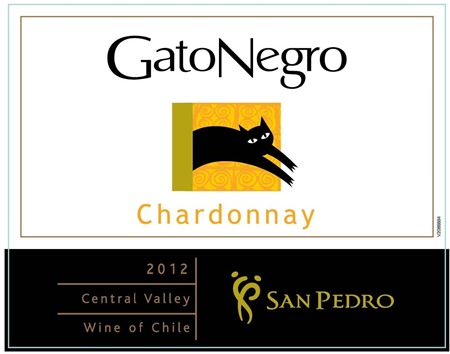Do you by any chance, happen to have a black cat? If you do, then you may know something about the folklore that surrounds them. In ancient Egypt in the fifth century BC, most cats were worshipped and to kill one of them was a serious crime punishable by death. But by the years of the Middle Ages, cats were avoided because of their supposed association with black magic. The Pilgrims, despite their devout faith, were suspicious about most things and considered the black cat to be a familiar of witches. During the 14th century, many black cats were killed in Europe with the unexpected result that the rat population increased and probably contributed to the appearance of bubonic plague, better known by its more theatrical name, the Black Death. Many of the superstitions about cats date back hundreds of years and whether black cats are supposed to be lucky or unlucky depends very much on where you live. In Britain and many parts of Asia, black cats are considered lucky but in the USA, just watch out if a black cat happens to wander across your path.
Anyway, why am I telling you all this? (I was beginning to wonder – Ed.) Well, it’s because the Gato Negro (GAH-toh NAY-groh) range, despite being commercial mass-produced wines, offer excellent value. The name of course means “black cat” as you’ve probably realised by now and the wines are made by Viña San Pedro whose foundations go back to 1865. In that year, the splendidly-named José Gregorio Correa Albano San Pedro and his brother Bonifacio acquired family land in the Curicó Valley that was suitable for vineyards.
 The Black Cat Cometh.
The Black Cat Cometh.
They made their first wines with local grape varieties, but later used imported vines from France and Germany. Today the company is one of the largest and oldest exporters of Chilean wine. San Pedro’s main vineyards and cellars are in the country town of Molina right in the centre of Chile and a couple of hundred kilometers south of Santiago. The Gato Negro range first appeared in the 1960s and they now sell more than forty-eight million bottles every year, a number sufficiently staggering to make my mind go blank without even drinking any of it.
Gato Negro Chardonnay 2012 (white), Chile (Friendship & others, Bt. 645)
This is a super easy-drinker despite the 13% alcohol content, which you may have noticed, is fairly typical of Chilean table wines these days. It’s a blend of Chardonnay (shar-dn-AY) grapes from several vineyards and is an attractive pale yellow colour, with an appealing, slightly viscous appearance. Take a sniff and you’ll smell the intense buttery aroma of bananas, peaches and pineapple. You can almost feel the wine squealing, “Look! I’m a Chardonnay!” Behind the fruity aroma, there’s a touch of vanilla and a bright acidity which gives the wine a refreshing tang. It’s quite lively and assertive for a Chardonnay, with a good firm body and a lingering peppery finish. I would think the wine would work well with chicken dishes, game birds, veal, pork, fish, and pasta sauced with cream or butter and mushrooms. The makers suggest that you should drink it at around 10º – 12°C (50º – 54ºF).
Gato Negro Sauvignon Blanc 2012 (white), Chile (Friendship, Bt. 645)
This wine comes from grapes grown in San Pedro’s Molina vineyards in the Central Valley. The aroma of this pale yellow wine is probably its most outstanding feature, with reminders of fresh pineapple, mango and grass, possibly hints of gooseberry. There are faint, herby overtones and I thought I could pick up the smell of dill and tomato leaves in there somewhere. Incidentally, in case you are new to wine, Sauvignon Blanc (SOH-vihn-yohn BLAHN) is a grape originally from the Bordeaux area of France and tends to be sharper than Chardonnay. In France’s Loire Valley they use the grape for making crisp and mineral-tasting wines which are perfect for fish dishes or light salads. Actually, some people are put off Sauvignon Blanc because sometimes it can taste a bit tart.
But this Chilean example is far removed from its zesty French cousins. It’s a light wine with a fruity taste and a clean refreshing tang which gives it a lively character. At only 12% alcohol, it’s a mild and unassuming easy-drinker and there’s a pleasing grassy citrus finish too. You could pair this wine with curries, salsas, vegetable dishes, quiches and light cheeses. Sauvignon Blanc is one of the few wines that go well with sushi, but I’d be quite happy to enjoy this one on its own.
Gato Negro Cabernet Sauvignon 2012 (red), Chile (Friendship, Bt. 645)
This is a lovely vibrant ruby red with violet tints and you’ll notice the little “legs” which form when you swirl the wine around the glass. These are caused by the Marangoni Effect, which you may recall, is named after the Italian physicist Carlo Marangoni, who studied surface phenomena in liquids for his doctoral dissertation during the nineteenth century. History does not record how many of glasses of wine he knocked back during the course of his research.
This Cabernet Sauvignon (ka-behr-NAY soh-vihn-YOHN) wine has an attractive silky appearance and looks inviting in the glass. But before the first swig, the first sniff. And it’s worth it, because there’s a rich fruity aroma of ripe black berries, blackcurrants and cherries. If you really concentrate, you might detect red peppers and mint. The wine has a very soft, smooth mouth-feel with loads of fruit, sweet berries and gentle tannin. The tannin also comes through on the aftertaste and makes a pleasingly dry finish to each mouthful. At just over 13% alcohol, this is an easy-drinker if ever there was one. It doesn’t really need food and I’d be quite happy to drink this solo, especially at around 16-18°C. Even so, it would make a good partner for beef, lamb, pork, duck and a good many strong cheeses. If you generally find reds a bit firm and harsh for your taste, you may well enjoy this particular Black Cat.
Incidentally, during the 10th century King Henry I of Saxony decreed that should anyone feel compelled to kill a black cat, the fine would be sixty bushels of corn. In case you are wondering, a bushel of corn is 56 pounds and would cost about two dollars today, or so I’m told. It was probably a lot of money in the 10th century and hopefully sufficient to deter people from bumping off most of the feline population.




